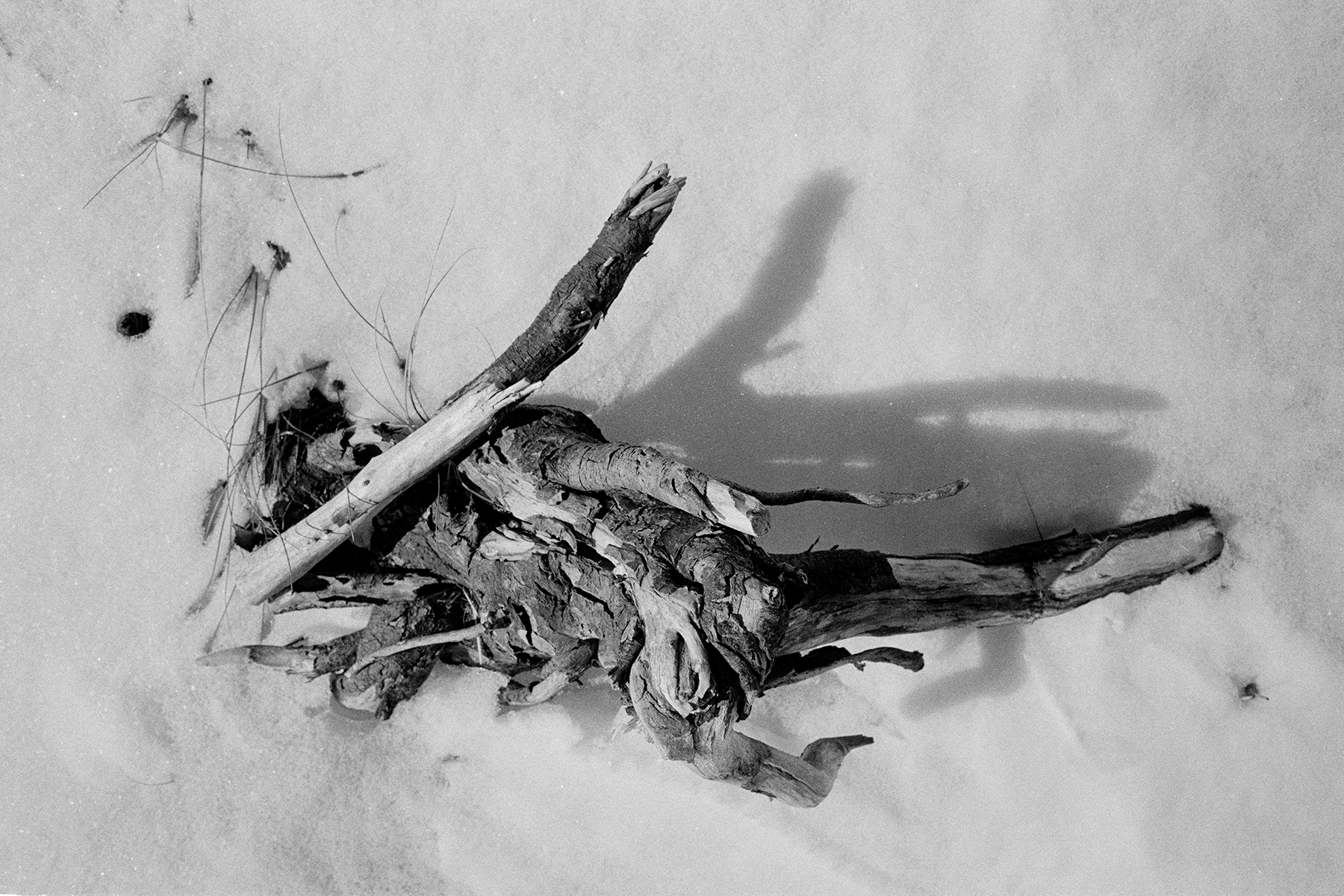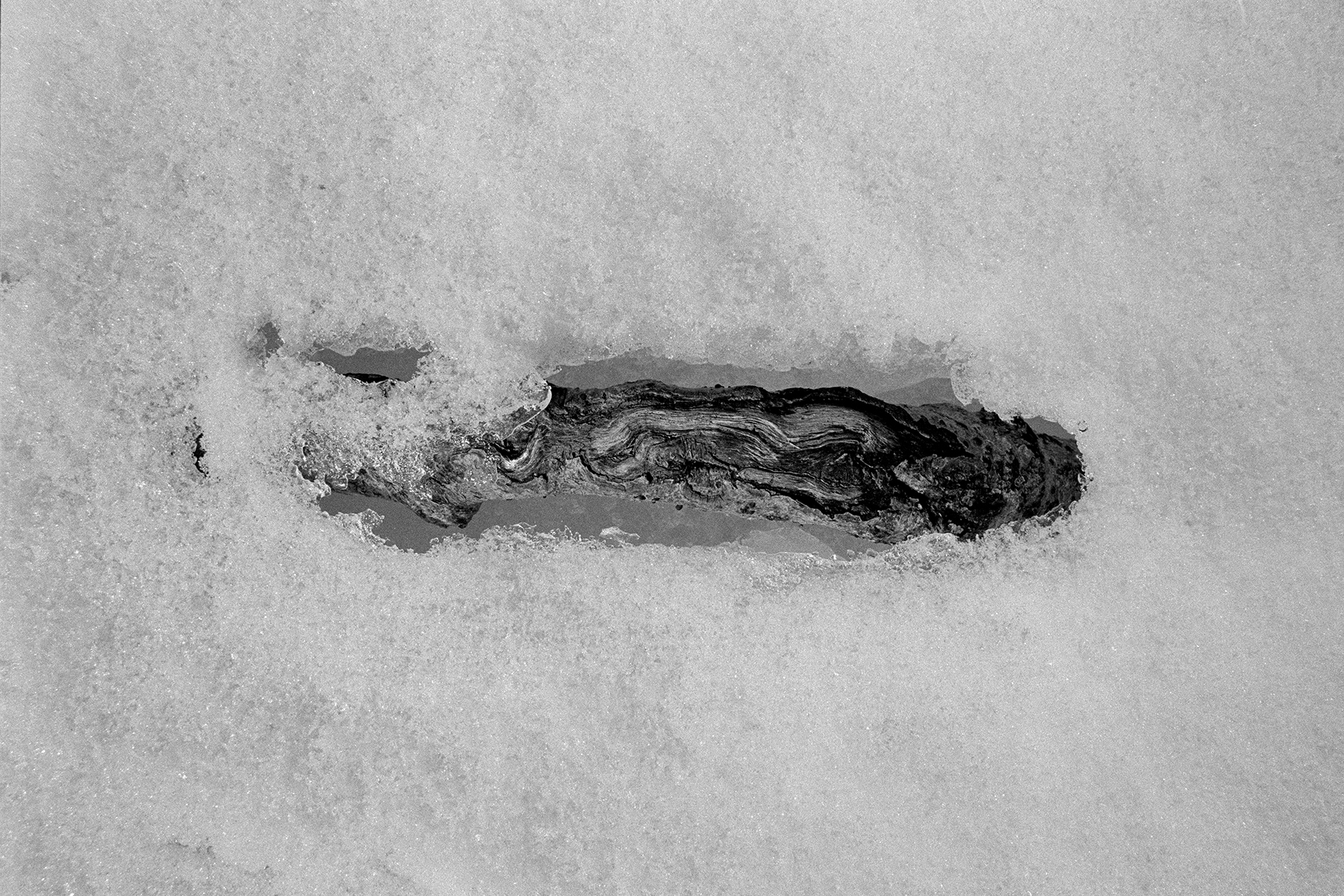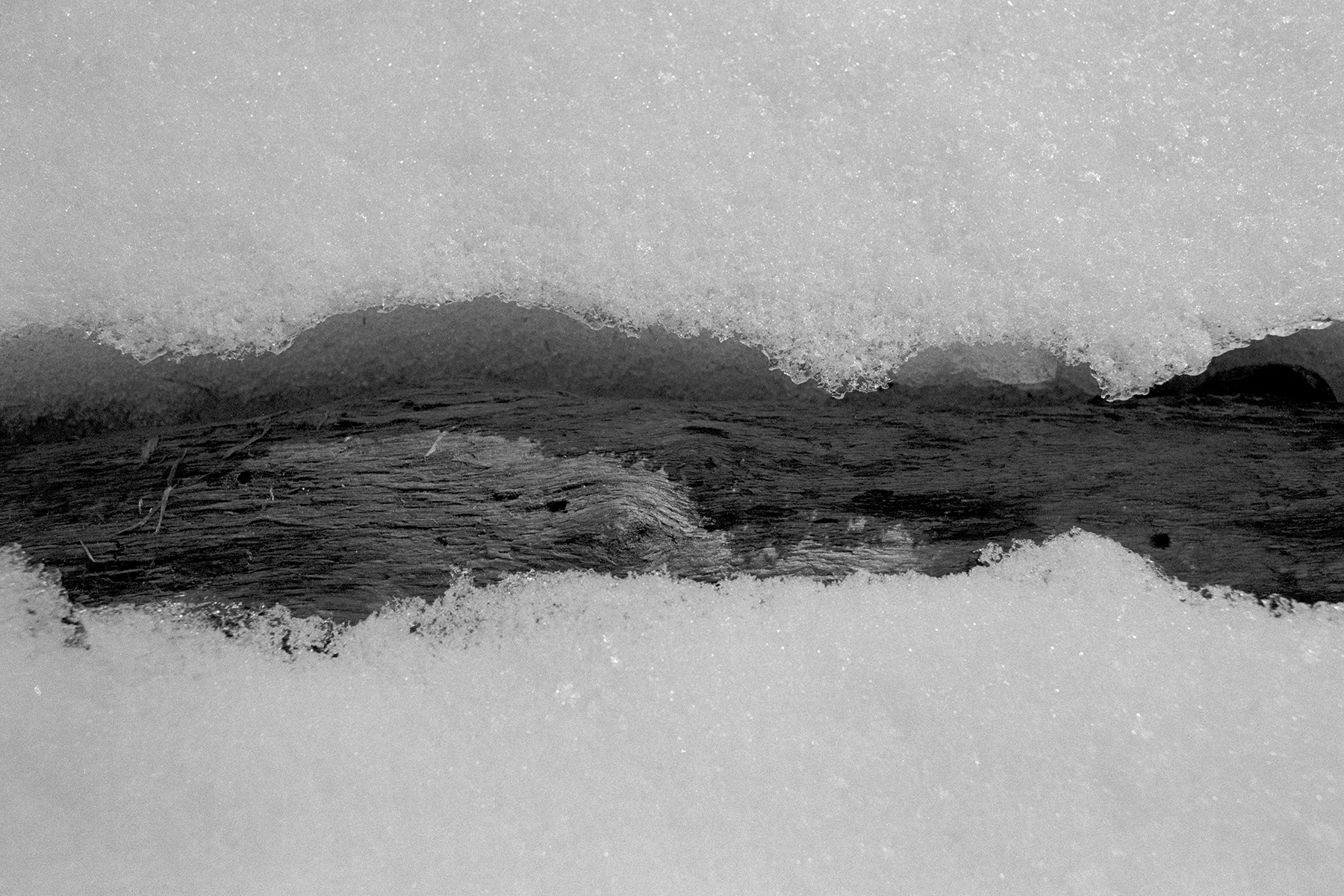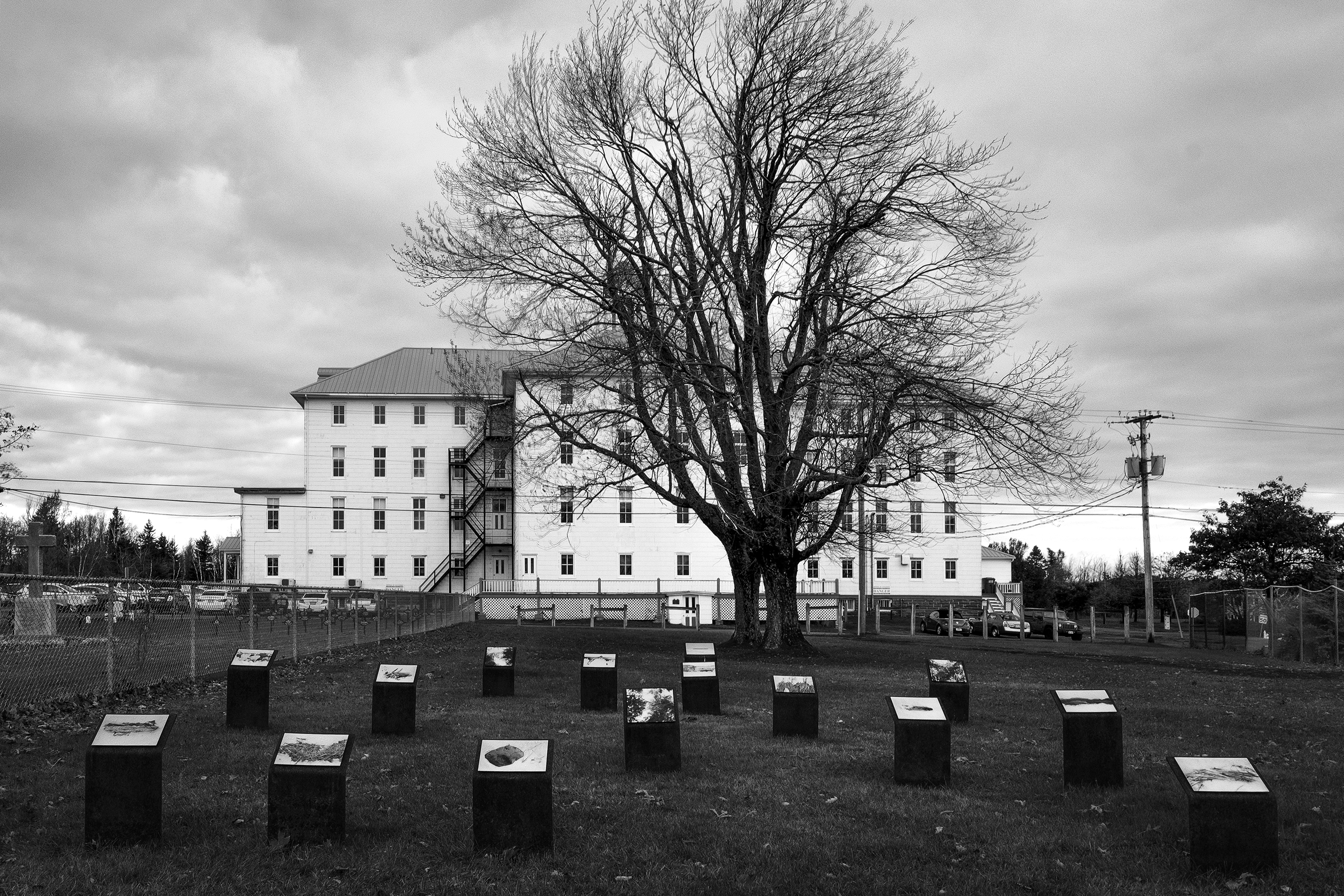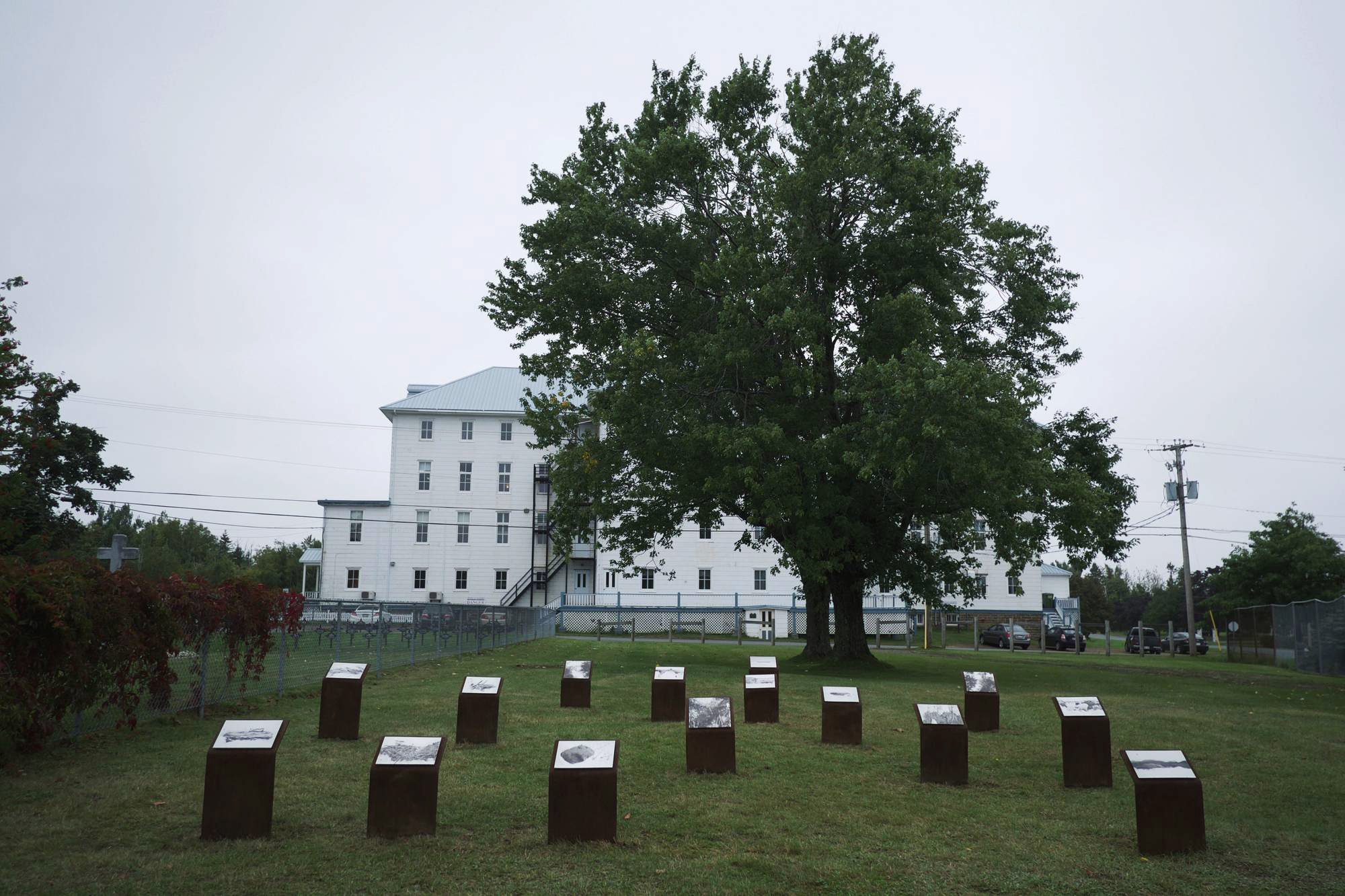L'œuvre d'art public Sheldrake (2017) commémore les personnes qui ont été séquestrées sur l'Île Sheldrake entre 1844 et 1849 à cause de la lèpre. L'œuvre comprend 15 photographies imprimées sur aluminium, chacune installée sur un socle en acier corten. Les socles, de différentes hauteurs, ont été préalablement arrosés avec l’eau salée de la rivière. Le processus d'oxydation a marqué le matériau et a également créé un lien avec les déplacements par bateaux au XIXe siècle.
« Un jour d’hiver, j’ai marché sur la glace de la rivière Miramichi depuis Bartibog pour me rendre à l’endroit où les événements se sont déroulés il ya plus de 150 ans. Quand je suis arrivé près de l'île, je lui ai demandé de me raconter son histoire. En suivant mon intuition, j'ai photographié les éléments naturels qui avait commencé à apparaître à travers la neige. Les images expriment un sentiment d’isolement et la réalité du cycle des saisons : certains y ont vécu 5 ans dans l’agonie et 15 y sont morts dans l’anonymat avant le transfert du lazaret à Tracadie. »
Un documentaire présente le processus de création de l'œuvre et l'histoire de la lèpre sur l'île Sheldrake. Ce travail fait partie du projet "Histoires retrouvées" du professeur Ronald Rudin de l'Université Concordia.
_
The public artwork Sheldrake (2017) commemorates the people who were sequestered on Sheldrake Island between 1844 and 1849 because of leprosy. The artwork consists of 15 photographs printed on aluminium, each installed on a pedestal made of corten steel. The pedestals, of various heights, were previously watered with salt water from the river. The oxidation process marked the material and also created a connection with boat travel during the 19th century.
« On a winter day, I walked on the ice of the Miramichi River from Bartibog to get to the place where, over 150 years ago, the events took place. When I arrived near the island, I asked her to tell me her story. Following my intuition, I photographed the natural elements that began to appear through the snow. The images express a feeling of isolation and the reality of the cycle of the seasons: some lived in agony for 5 years and 15 died there in anonymity before the transfer of the lazaretto to Tracadie. »
A documentary presents the process behind the creation of the artwork and the history of leprosy on Sheldrake Island. This work is part of the "Lost Stories" project, by professor Ronald Rudin of Concordia University.



